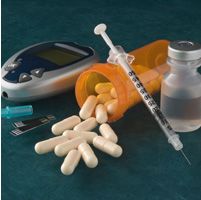Article
Latent Autoimmune Diabetes in Adult: Current Knowledge
Author(s):
In recent years, growing understanding of diabetes has led to its recognition as a multifaceted disease that cannot simply be dichotomized into its 2 most common subgroups.

In recent years, growing understanding of diabetes has led to its recognition as a multifaceted disease that cannot simply be dichotomized into its 2 most common subgroups.
For example, adult-onset autoimmune Type 1 diabetes (T1D), otherwise known as latent autoimmune diabetes of the adult (LADA), is a distinct disease that may require a unique management strategy. Recently, the Danish Diabetes Academy and its associates congregated to explore LADA’s multiple challenges, including classification, genetics, epidemiology, immunology, metabolism, clinical presentation, and treatment.
LADA is believed to be the most prevalent form of adult-onset autoimmune diabetes, as well as the most dominant of autoimmune diabetes overall. Although not fully understood, LADA has been associated with genetic and immunological features commonly observed in childhood-onset T1D, and certain genetic features of Type 2 diabetes (T2D). This genetic heterogeneity created uncertainty regarding LADA’s appropriate classification as either a distinct syndrome or as part of a diabetes spectrum.
Its lack of distinct clinical features makes identification of LADA a complex task, and various institutions employ different screening strategies. Some experts advocated screening patients with adult-onset diabetes for diabetes-associated autoantibodies (DAA). They claimed that identifying LADA in these patients may be useful for understanding its predisposing genetic factors, as well as the optimal treatment methods. These DAA include insulinoma-associated antigen IA-2 (IA-2A), glutamic acid decarboxylase 65 (GADA), and islet cell cytoplasmic antibodies (ICA). GADA is by far the most common DAA, and is observed in up to 90% of positive cases. GADA positivity is strongly predictive of future insulin dependence in the future.
Currently available evidence has indicated that LADA patients should receive first-line treatment with insulin replacement therapy. Information regarding the use of metformin in these patients is lacking, and use of sulfonylureas is discouraged. Studies have suggested that LADA patients have poorer glucose control than T2D patients, which emphasizes the need for further therapeutic studies including large, prospective, randomized clinical trials.




